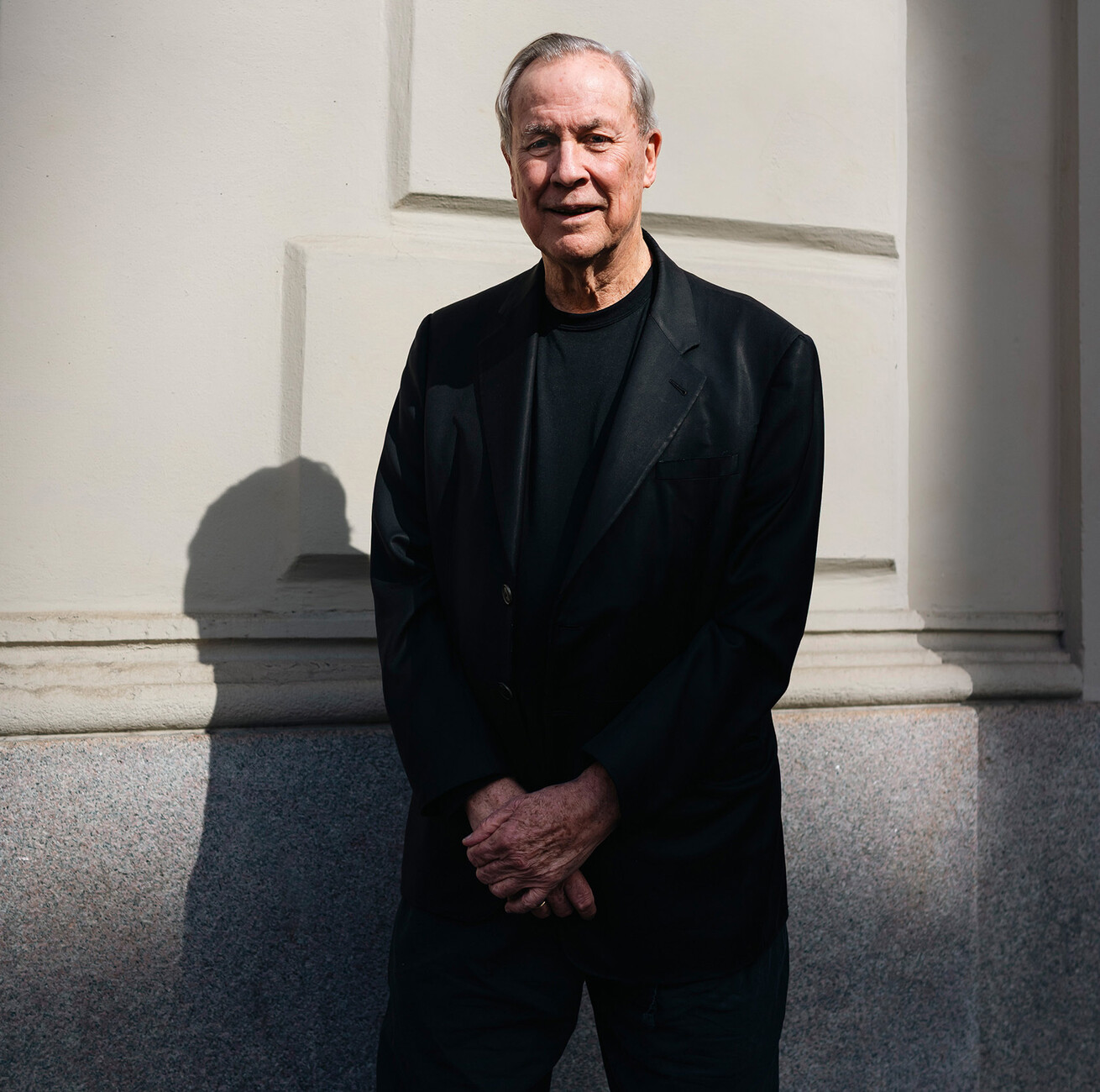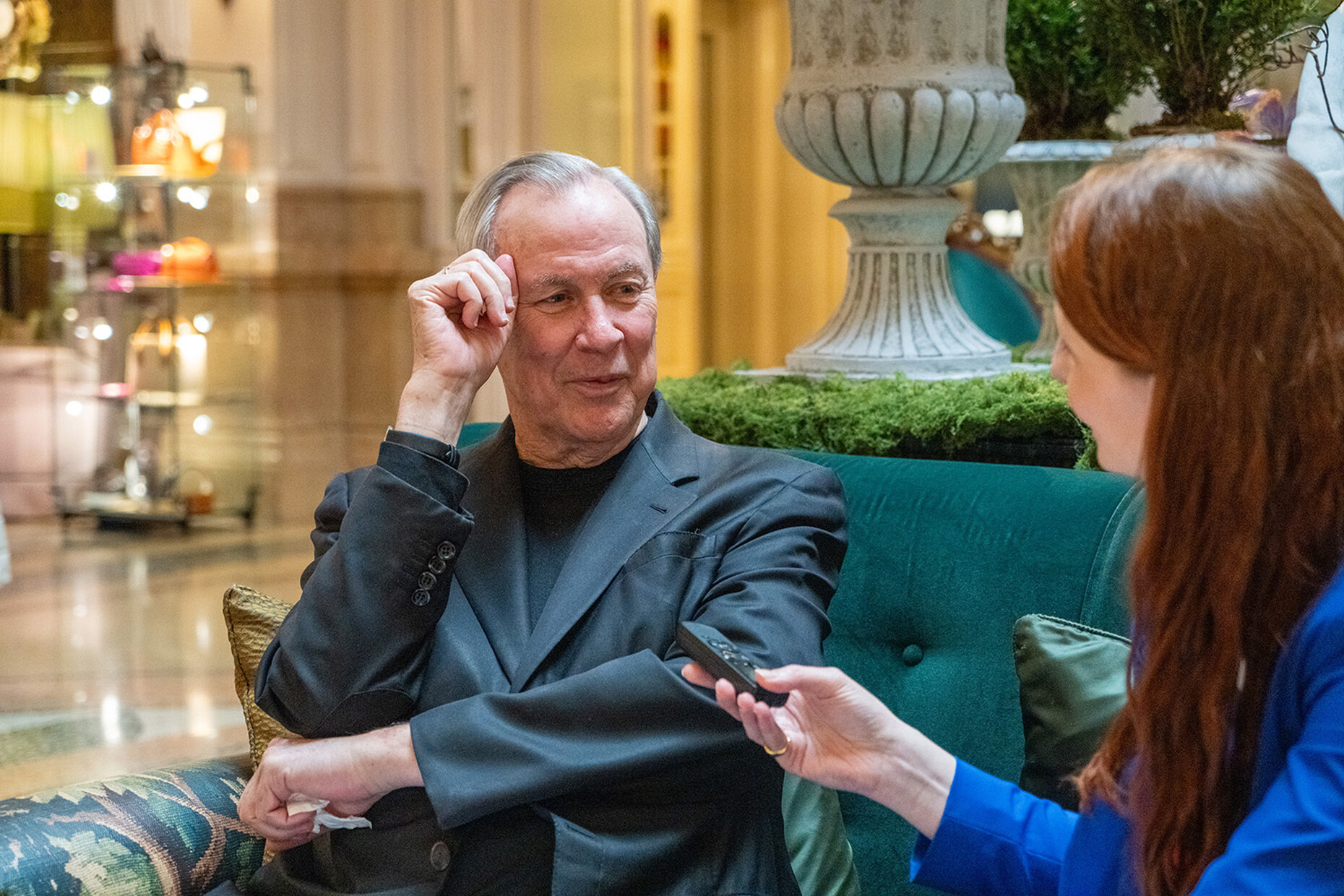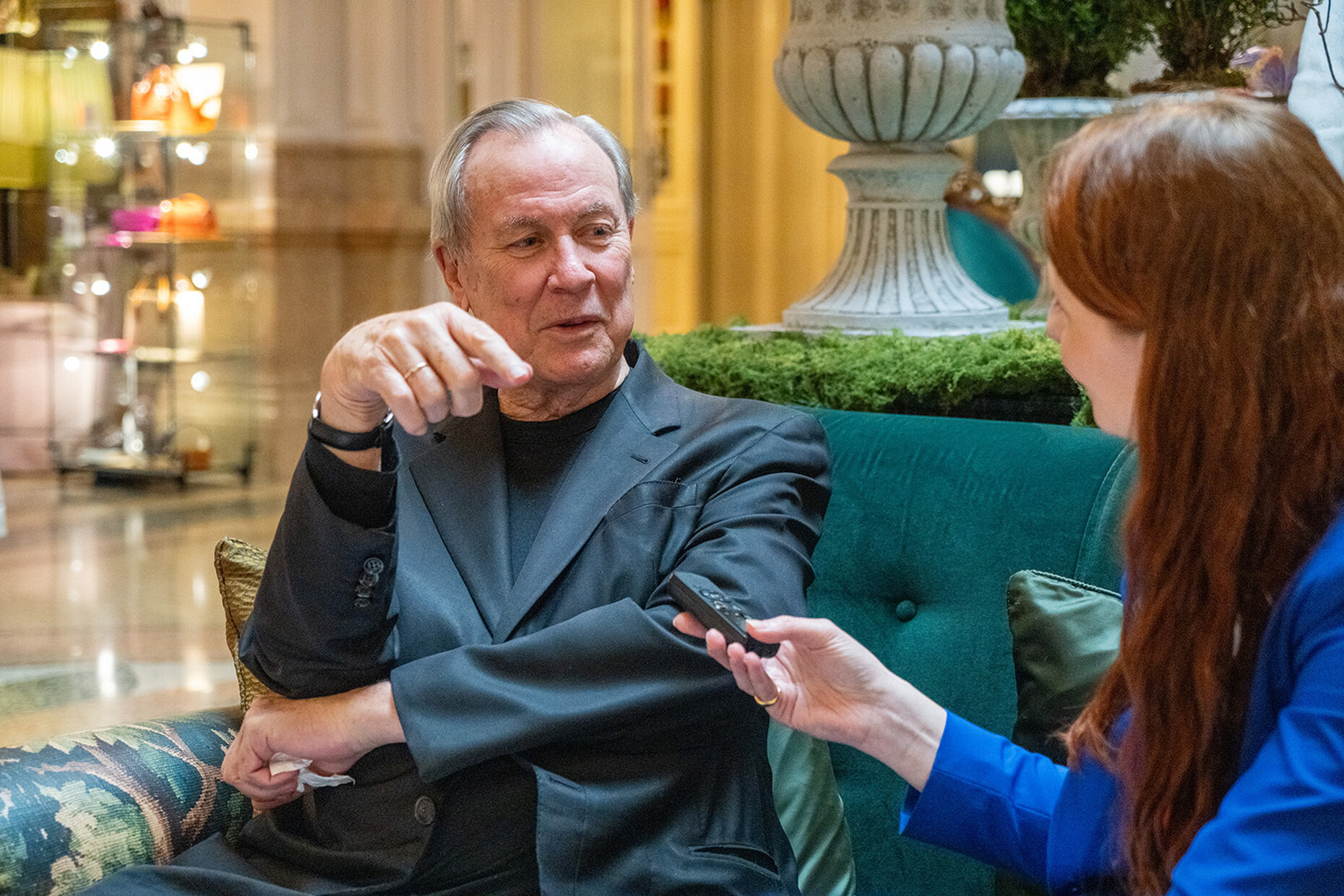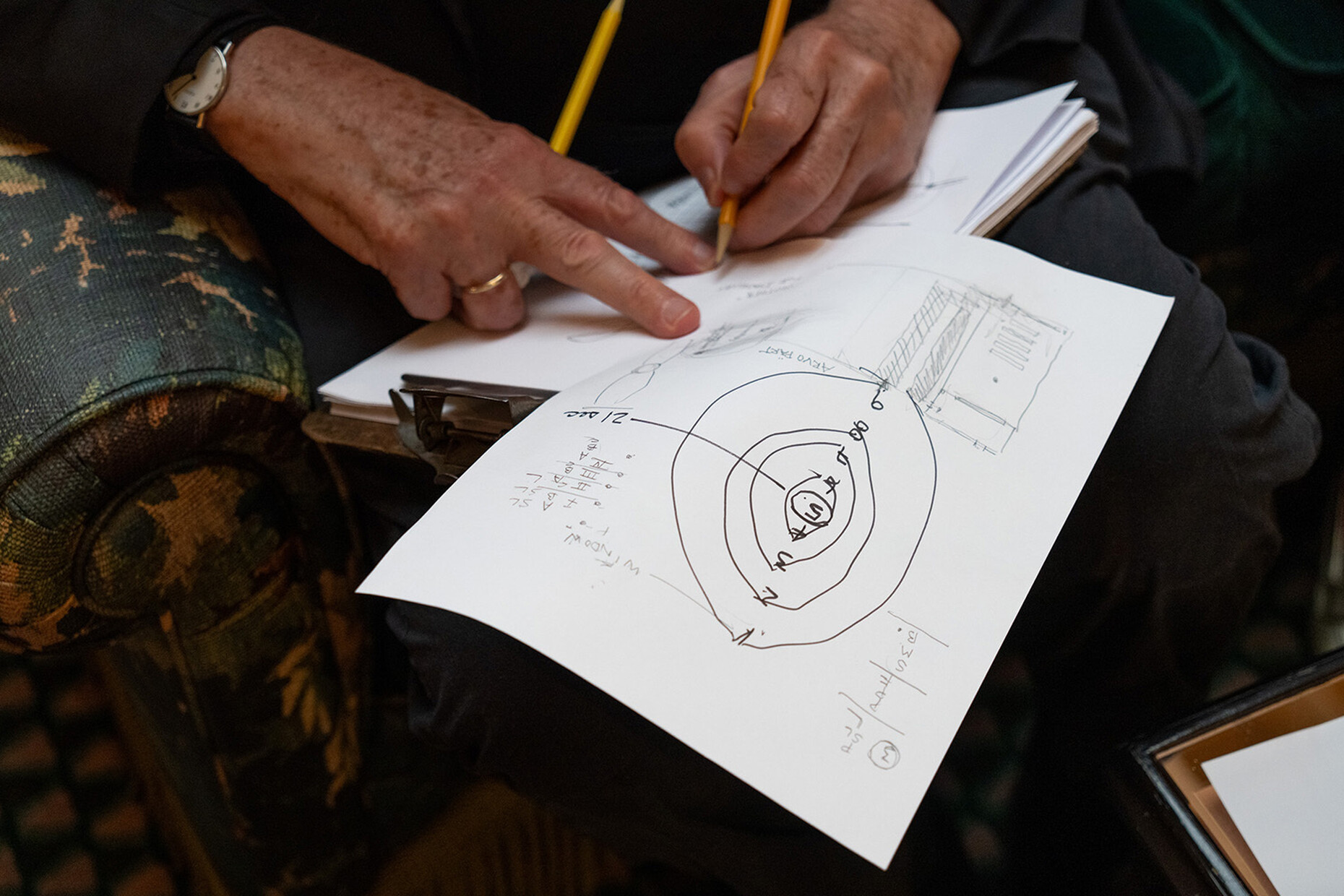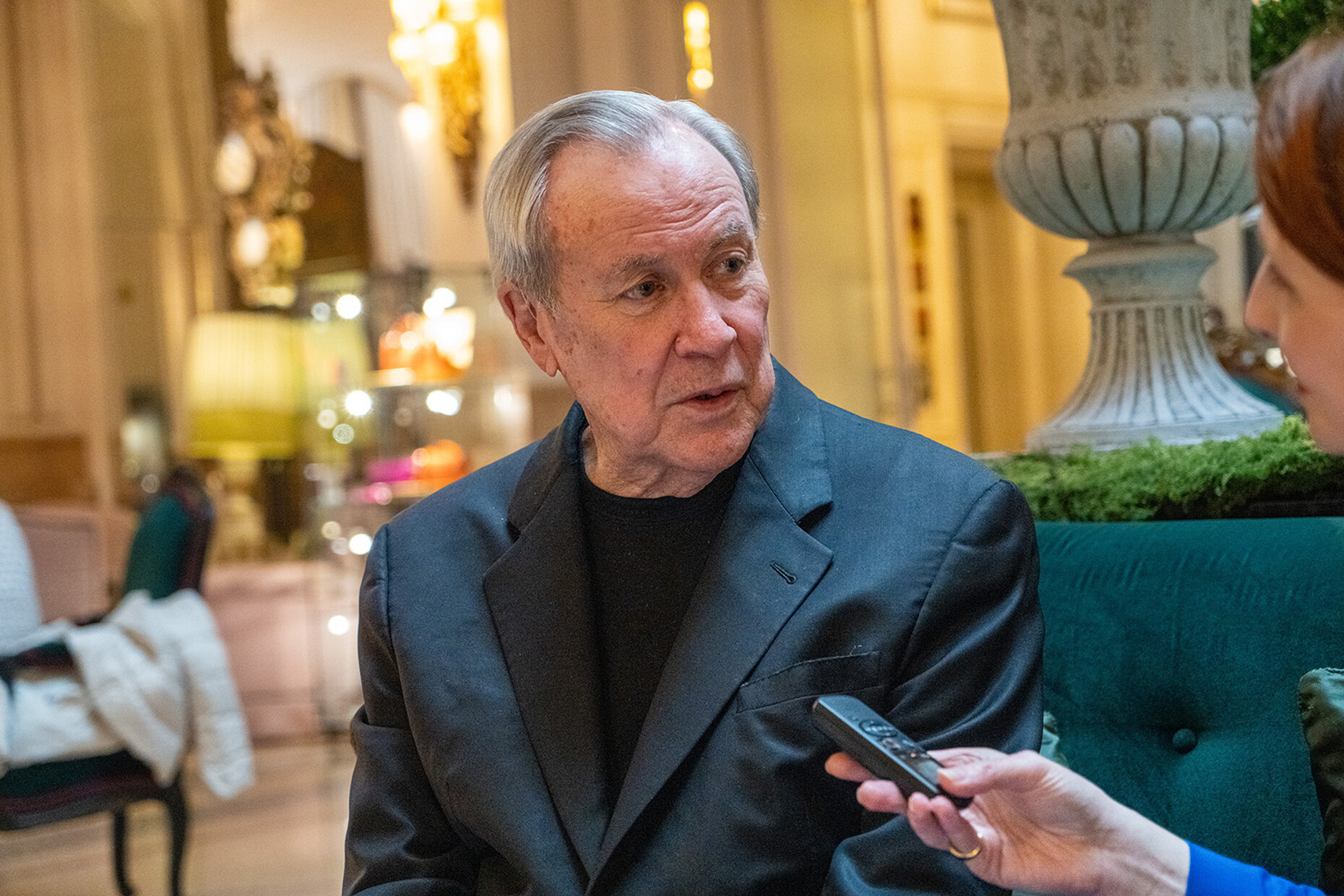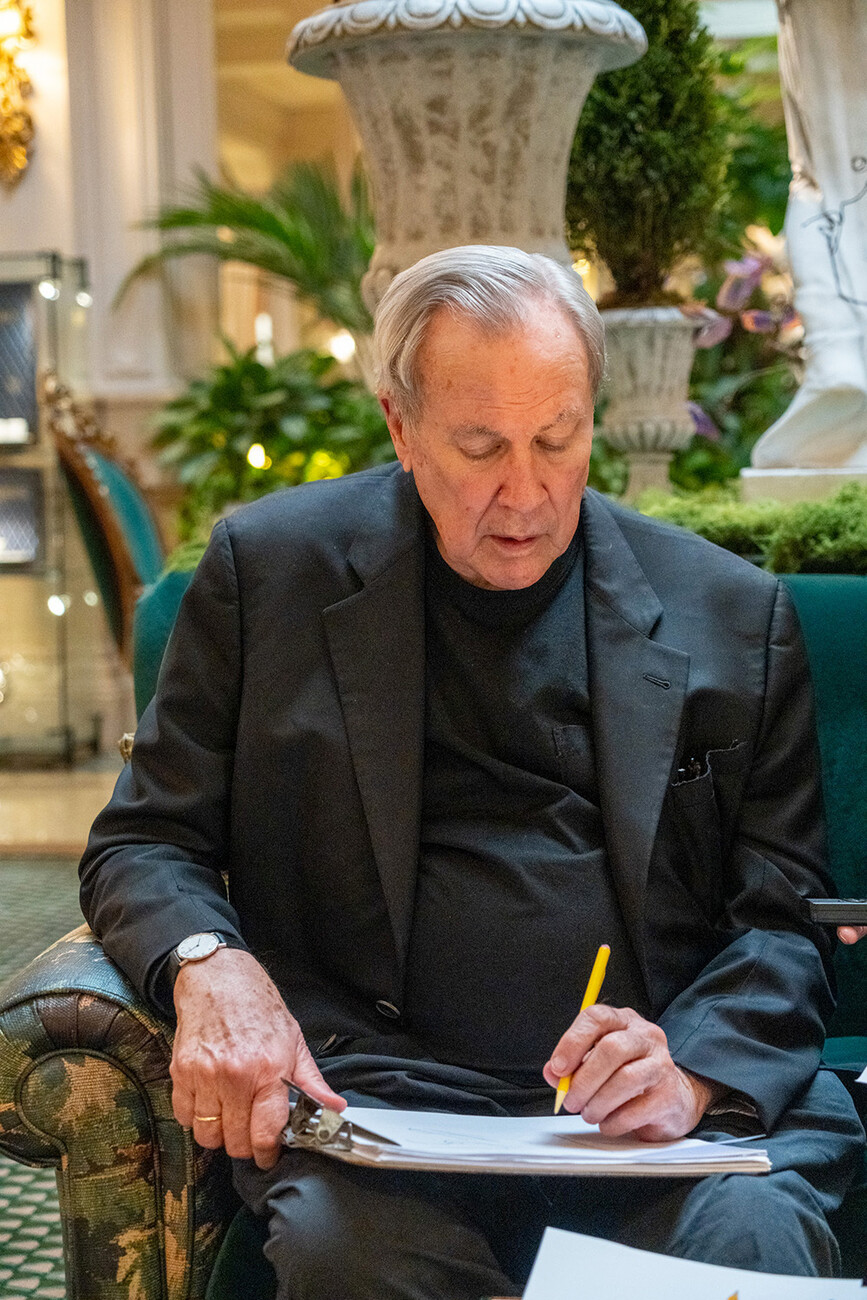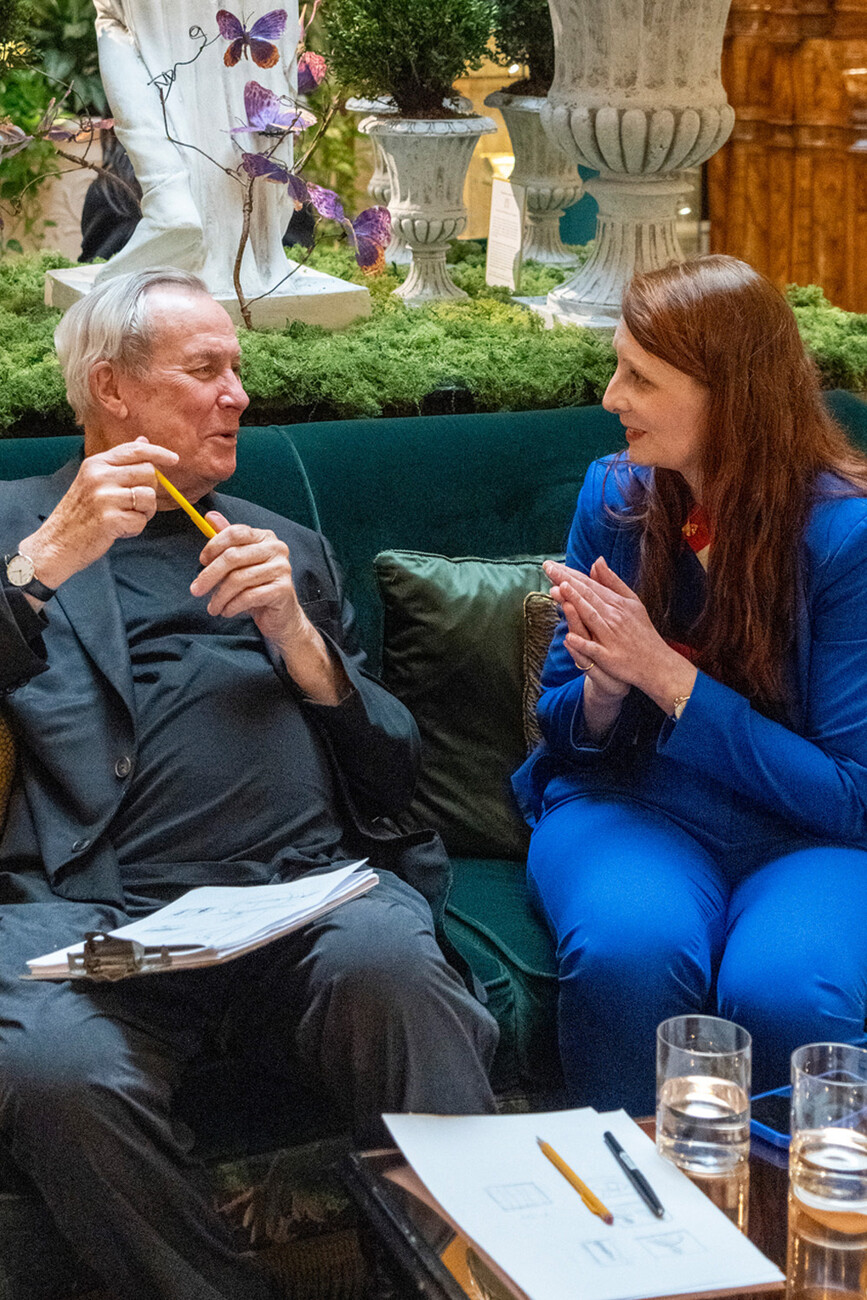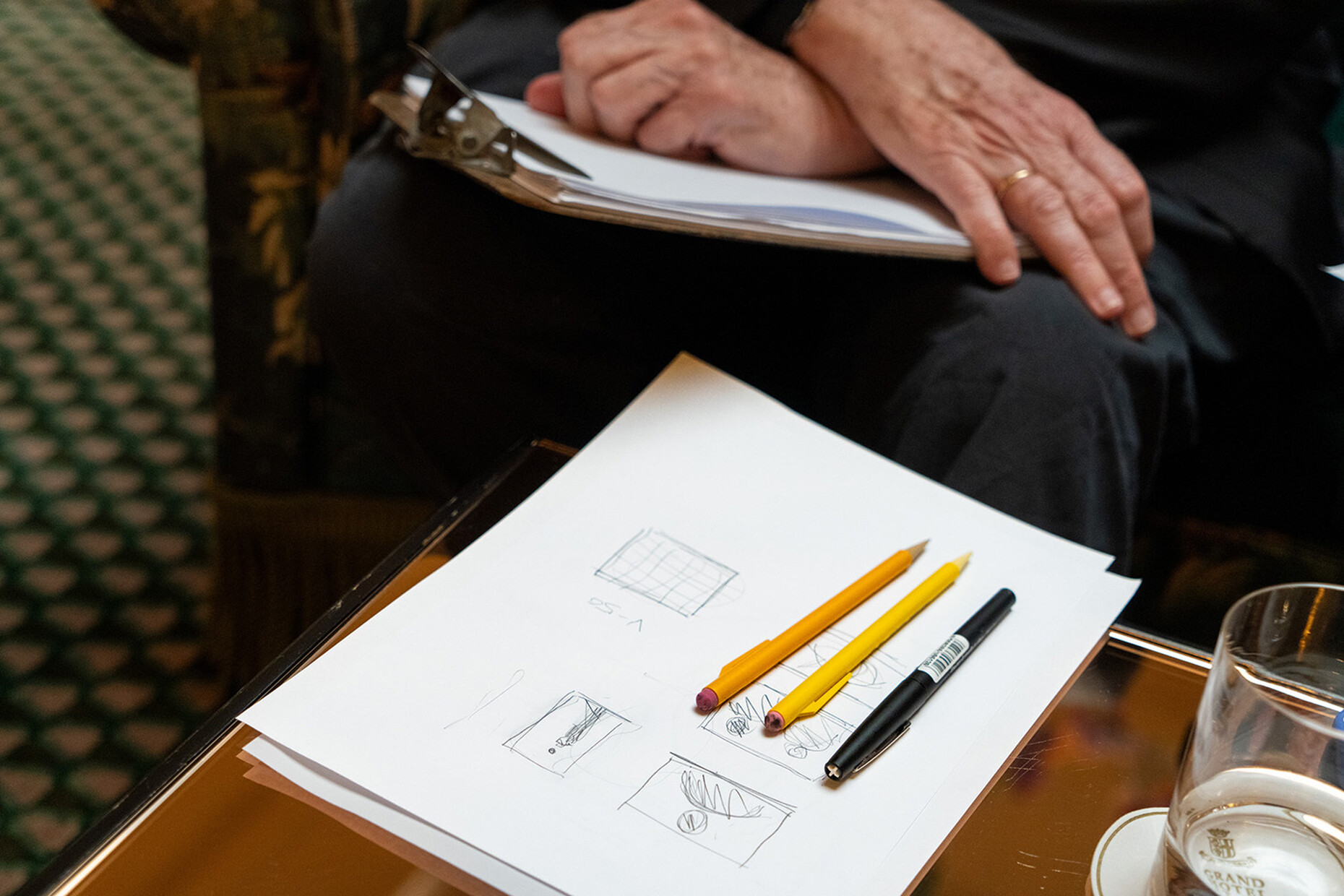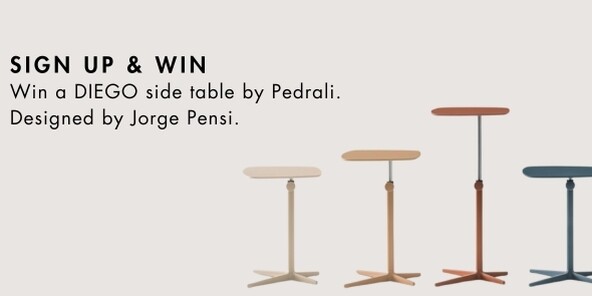Balancing the moment
Anna Moldenhauer: When you plan an exhibition or create a new work, you start by thinking about the lighting. Why is that, and what thoughts go through your mind during this process?
Robert Wilson: I always say that without light there is no space. Light creates space. This is true in architecture as it is in theater. Yet it is often considered last – in theater, someone writes a play, then it is decided to stage it, and then it is designed. In my opinion, the stage design should be architectural; it does not need props. Light should never be an idea that is added after the fact.
For the Salone del Mobile 2025, you have created a vision of Michelangelo's sculpture “Pietà Rondanini” in a space designed specifically for this purpose: the “Spanish Hospital” in the Sforzesco Castle. The work, entitled “Mother,” is accompanied by the sounds of Arvo Pärt's “Stabat Mater.” What inspired you to create this work?
Robert Wilson: The Salone asked me to create a work that showcases all the areas I work in. I was honored by the request. For the event at La Scala, the stage featured lighting, chairs, architecture, and music. The program consisted of five scenes from five of my opera productions. I have also devised an installation of the Pietà Rondanini in a non-theatrical space. Furthermore, as part of the Salone del Mobile, I gave a lecture specifically on lighting concepts and held a discussion with designers and architects about light. I have been working in theater and museums for over 50 years. And in those 50 years, light has changed enormously. We used to have incandescent bulbs that could be dimmed and gave off a warm light. When you dim LED lamps today, they are cold. They remain cold. One of the challenges we face today is how to dim these energy-saving lamps so that they give off a warm light. During my architecture studies, we were taught by Louis I. Kahn, among others. On my first day, he gave a lecture and said that we students should start with light. That sentence hit me like a hammer and has stayed with me ever since.
It's a great statement, but in a way it's also abstract. How did you develop the concept further?
Robert Wilson: It's a structure of time and space. Should it be dark for a long time or light for a long time, or is it a mixture of cold and warm light? Does the light come from above? From the side? My work is mainly known in the theater, where voices and music are also important. So how can light help me “hear” better? Close your eyes. You will be able to hear things you didn't hear before during our conversation.
That's right, you're immediately more focused, your mind is even more alert to your surroundings because one of your senses is missing. During the performance of “Mother” at the Sforzesco Castle, the room was completely darkened at times. As the lights dimmed, the audience became increasingly quiet and focused.
Robert Wilson: So you're not distracted?
Exactly.
Robert Wilson: That's what I mean. How can I create something visual that helps me hear better than with my eyes closed? That's the challenge. The only thing that is constant is change. This sequence of sounds that we are perceiving around us right now during our conversation will never happen again in exactly the same way. It is unique. When you balance the light, you become more aware of this constant change.
With your atmospheric works, you have created new perspectives internationally, for example in theater and performance art. What new impulses do you want to convey to the audience at the Milan Furniture Fair with your work “Mother”?
Robert Wilson: I don't have a message. The work of an artist is to say what is it, not to say what it is.
Is there an aspect of lighting that you would like to see given more consideration in design and architecture?
Robert Wilson: Yes – the right balance between artificial and natural light. Museums such as Renzo Piano's Menil Collection in Houston do this very well; there, for example, natural light can be controlled via slats on the ceiling. I grew up in Texas, where the sunlight is often very intense. You need to control both light sources, but you also need to consider how the building or the work will look at different times of day. What does it look like in the midday sun? What about when it rains? How does it look in a full moon? Or a quarter moon? I remember being in Colorado years ago and seeing Gio Ponti's Denver Art Museum. At night, the building was beautiful; he had really thought about it. I imagine light as a battery that runs throughout the day under changing conditions. Sometimes it's a gray day. Sometimes it's a bright day. That's a challenge.
Have we lost this sense of light in architecture at the present time?
Robert Wilson: I think so. Often, light is just decoration, like in this hotel lobby where we are sitting right now. There's nothing wrong with decoration per se, but you should start with the architecture first and then add the decorative elements. If the lighting is decorative throughout, then no thought has been given to life. Light sources should be glare-free, especially if they are used to highlight something. You can't see any details in bright light; you can't appreciate the design and architecture.
Looking at furniture design, why does the structure of a chair appeal to you in particular?
Robert Wilson: I like what the writer Gertrude Stein said when she was asked, “Miss Stein, what do you think of modern art?” Her answer: “I like to look at it.” In that sense, I like looking at chairs, especially when they stand freely in a room, because then you begin to perceive them as sculptures. Like the “Frassino Tinto Black & White Aswood Superleggera Chair” designed by Gio Ponti for Cassina in 1957. It is made to be viewed from all angles, not just from one side. This sense of aesthetics is the same that comes into play when designing a building. It is inherent. Choreographer George Balanchine also said that choreographing ballet is like building a chair with craftsmanship.
You work as a director, stage designer, architect, designer, and painter. What does it take to move so easily and versatile between disciplines?
Robert Wilson: I don't see any difference between dancing ballet, designing fashion, singing opera, or designing buildings. You're always drawing a line in some way. There are only two types of lines, a straight line and a curve. The inner structure of the disciplines is the same in each case.
In your work, time and space seem elastic. You learn to endure silence and stillness, to pay attention to details and to trace the emotions that the work triggers in you. You create a world between worlds that seems like a dream. It has an intense aesthetic that can be euphoric and bright or mystical and dark. What inner window do you want to open for the audience with your work?
Robert Wilson: That's difficult to say. How do you create space? Yesterday, I had lunch with a woman who had seen “Mother,” and she said, “I want to thank you. You gave me time to think about some things that have been on my mind.” In busy cities like Frankfurt am Main or Milan, there are very few places where you have time to think. Theater and installations can create these spaces for us. Mental spaces for thinking and dreaming. Most of the time, we are so overwhelmed by stimuli in our environment that our senses are numb. That's not necessarily a bad thing, because often you have to be able to ignore sensory impressions such as noises—I live in New York City, and when you get on the subway there, it's unbearably loud. Most people don't hear it anymore; they are deeply immersed in themselves.
You just blinked. What did you see?
I can't say, the moment passes too quickly.
Robert Wilson: That's right, it happens very quickly, but maybe you were dreaming for a brief moment. The negative is part of hearing and seeing, both internally and externally. It's the possibility of creating balance. In theater, time is plastic; the slower you can construct time and space, the more you can stretch it. It's the option of hearing and seeing in another world. Not too long ago, I directed Verdi's Otello and Verdi. Otello starts with a storm. Very bombastic, very loud. This was followed by a seven-minute film about the death of an elephant, which took place in silence. So the audience watched a seven-minute film in silence, and then came Verdi's storm. It seemed even louder because you had been in silence for seven minutes. In the installation “Mother,” it remains dark for the first two minutes and 23 seconds. After that, the sculpture is explored piece by piece. It is a time-space construction. So these are decisions that are made in time and space, and they are artificially constructed. That's the interesting thing as an artist, that you can structure time and space in a plastic way.
You have a special connection to disabled people, also through your adopted son. In your experience, how do they perceive your construction of space and time?
Robert Wilson: I never thought of them as being disabled but especially gifted. From Raymond Andrews I learned that the deaf can feel sound and in that sense, hear. I learned from him how to read bodies, signs and signals as a language. It was a learning experience. It's often been mistakenly thought of as therapy, – it was not at all. In the case of Christopher Knowles, again I was totally fascinated by his mind and how it works in seeing large patterns quickly. He had a phenomenal knowledge of time and space that I didn't have. For me again it was a learning experience, – both Christopher and Raymond have enriched my life. I never tried to change them but to embrace who they are.
We live in very turbulent times, marked by rapid change and widespread fear. The world order and climate as we know them are rapidly disintegrating. To what extent do you allow this chaos in our reality to influence your work?
Robert Wilson: It's also a question of balance. We have to allow it, that's all. Look: there's a tree outside the building, it helps you see the building, and the building helps you see the tree. The whole thing is a choreography: the people walking on the sidewalk, the cars driving on the street, the rigid building, and the gentle movements of the leaves on the tree. Everything happens at the same time. In classical Greek theater, there is a protagonist and an antagonist, as well as a chorus. In classical ballet, there is a prima ballerina and a corps de ballet. The art lies in artificially constructing this natural balance. In music, you can create scenes in parallel at different tempos. Each opposite meets its opposite. You can also switch from one to the next; this is called theme and variation. Composers, choreographers, and architects use this technique. It is a construction that can change at the last second. Every decision brings about a change. What comes first? What comes last? An example: The ballet dancer Margot Fonteyn was 43 years old when she performed with Rudolf Nureyev, who was 23 at the time. The audience gave a standing ovation 30 minutes after their performance, but she said to him, “I don't want to dance with you like that again.” Why? He hadn't kept his balance and hadn't given her any space for short breaks, which would have been important given the difference in their energy levels. It's about the overall picture, making good use of time and space. Knowing what you want to achieve and what it takes to get there. Try to keep that in mind when you're at the theater. It's an overall construction of time and space.
Art is Robert Wilson's life, and he has been shaping it in a universal and unconventional way for decades: as a theater director, painter, designer, architect, and author. For the cultural program of the Salone del Mobile in collaboration with the City of Milan | Culture at the Museo della Pietà Rondanini – Castello Sforzesco, he has created “Mother,” an installation dedicated to Michelangelo Buonarroti's work. It can be seen until May 18 at the Museo della Pietà Rondanini – Castello Sforzesco in Milan.
9 a.m. to 6 p.m.
Piazza Castello, 20121 Milan MI, Italy
Project curated by Franco Laera
Production Change Performing Arts
Reservations on Vivaticket
